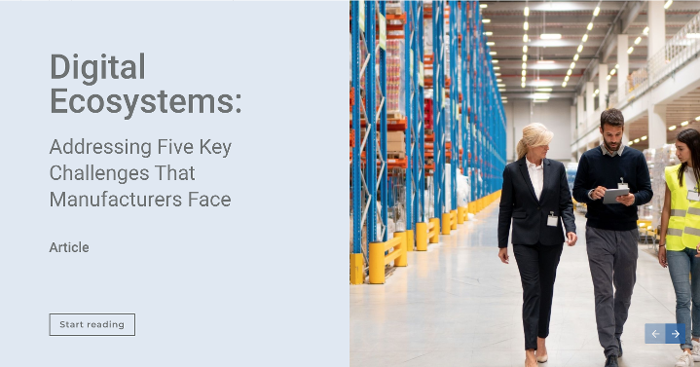Manufacturers are continually looking for ways to streamline their processes, become more efficient, eliminate overhead, and improve QA. The "lean" methodology of manufacturing is time-tested and can be an excellent way for manufacturers to focus on the most important aspects of their operation. However, as a recent report from AlixPartners discusses, this is only the case if lean processes are properly implemented. Their research showed that too many businesses are turning a lean approach into massive top-down projects with multi-year roadmaps, creating a lot of new paperwork and overhead - basically the opposite of what lean is supposed to accomplish.
So, let's take a look at some problems to avoid, and how lean can be implemented by medium to large scale operations, without becoming more trouble than it's worth.
Problem 1 - Top-Down Implementation is Inefficient
Lean processes will be more effective if they're implemented at the "ground level" first, by looking for specific areas within the manufacturing pipeline in need of improvement. Prioritization is key here. Those implementing lean should look for cases where lean will do the most good, and focus on upgrading those specific areas, rather than trying to implement global changes on a massive scale.
Otherwise, companies can easily end up collecting data with no good way of actually turning that data-collection into actionable changes and ROI. Likewise, company-wide training might be mandated, but not put into action until so much time had passed that workers forget their training. In worst-case scenarios, the company might spend years collecting data and adding bureaucratic hurdles, before finding a way to bring returns on that time spent.
Problem 2 - Not Providing Enough Ground-Level Power and Responsibility
One key concept behind lean is to create a workflow with as few interruptions as possible. Ideally, a lean environment should empower individual lower-level teams to make their own changes, and find their own paths towards greater efficiency, without the need to have all changes approved by multiple higher levels of management. That is precisely the sort of bottleneck to workflow that lean is supposed to avoid.
However, when companies approach lean from the same "top down" perspective as other methodological shifts, the result tends toward more bureaucracy, rather than less. The solution is simply to make sure individual teams, groups, and divisions have access to the tools and talent they need, then - after proper training - allow them room to find their own path towards lean improvements. Only intervene if the team is unable to do this.
Problem 3 - Treating Data As An End, Rather Than A Means
Lean methodology, along with most other Industry 4.0 upgrades, has a heavy emphasis on data collection. Data is the lifeblood of any attempt to improve or streamline manufacturing processes. However, there are three big dangers here:
- Scattershot collection of data without a clear plan for using it,
- Over-collection of data, even numbers which cannot yield actionable ideas, or
- Focusing on the process of data collection, rather than analysis.
Lean processes, and other data-focused methodologies, are only effective if the data is then analyzed via dashboards and other analytical tools and can be turned into useful information. Reports and meetings should not be focused on raw numbers, but rather on how those numbers feed into Key Performance Indicators (KPIs). Focusing on well-cultivated KPIs, and providing feedback on how teams' actions contribute to those KPIs, is key to making a data-focused approach work.

LogicBay Simplifies Communication And Rollout Within Diverse Ecosystems
Companies around the world are implementing lean methodologies and other Industry 4.0 processes to streamline their manufacturing - but keeping everyone on the same page is a major challenge. The tools and processes developed by LogicBay reduce this burden! Our FUSE platform provides an easy way to enable communication, collaboration, and education across your entire business ecosystem, regardless of size or complexity. To learn more about how FUSE can support your lean initiatives, just contact us!

